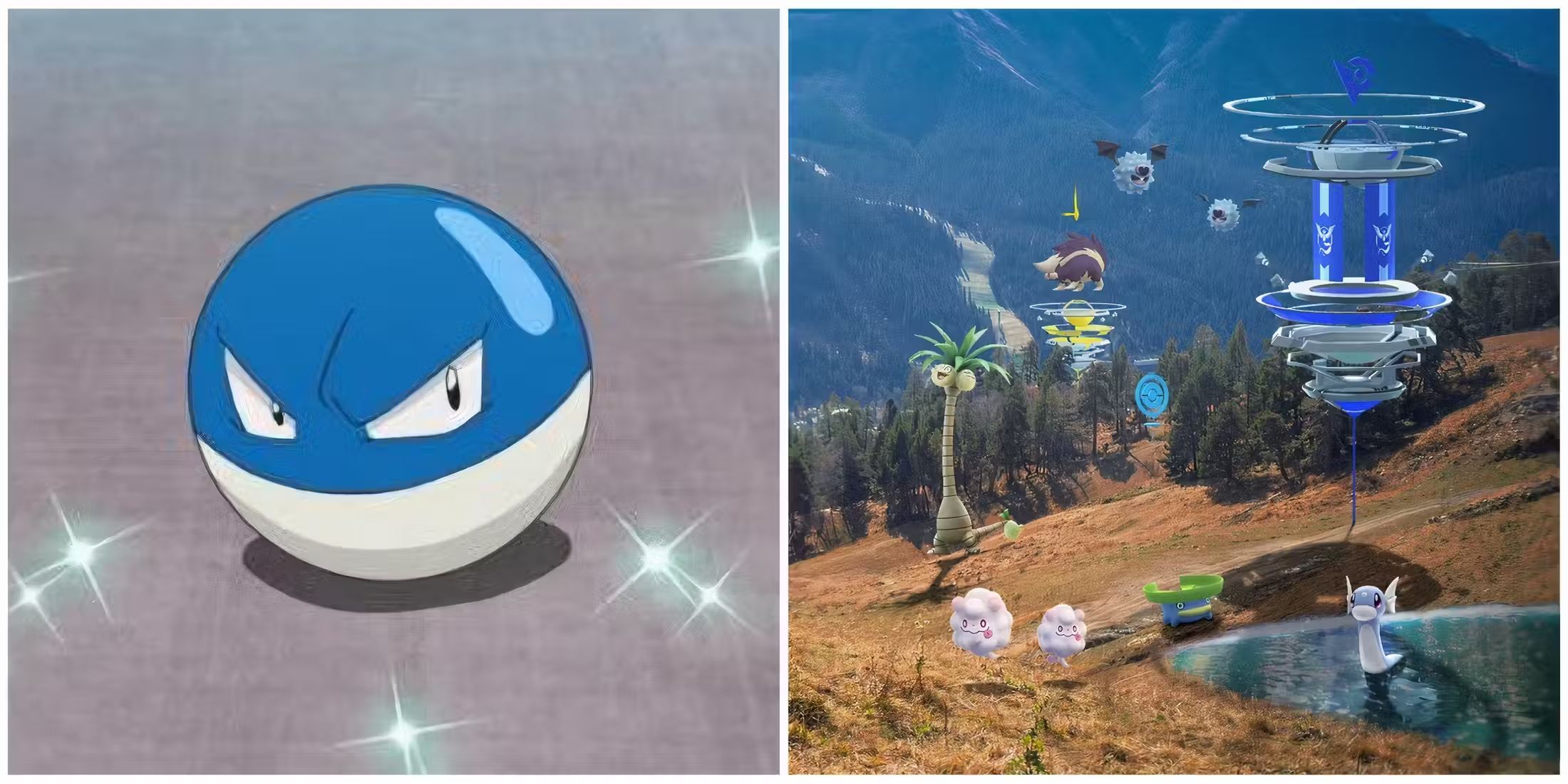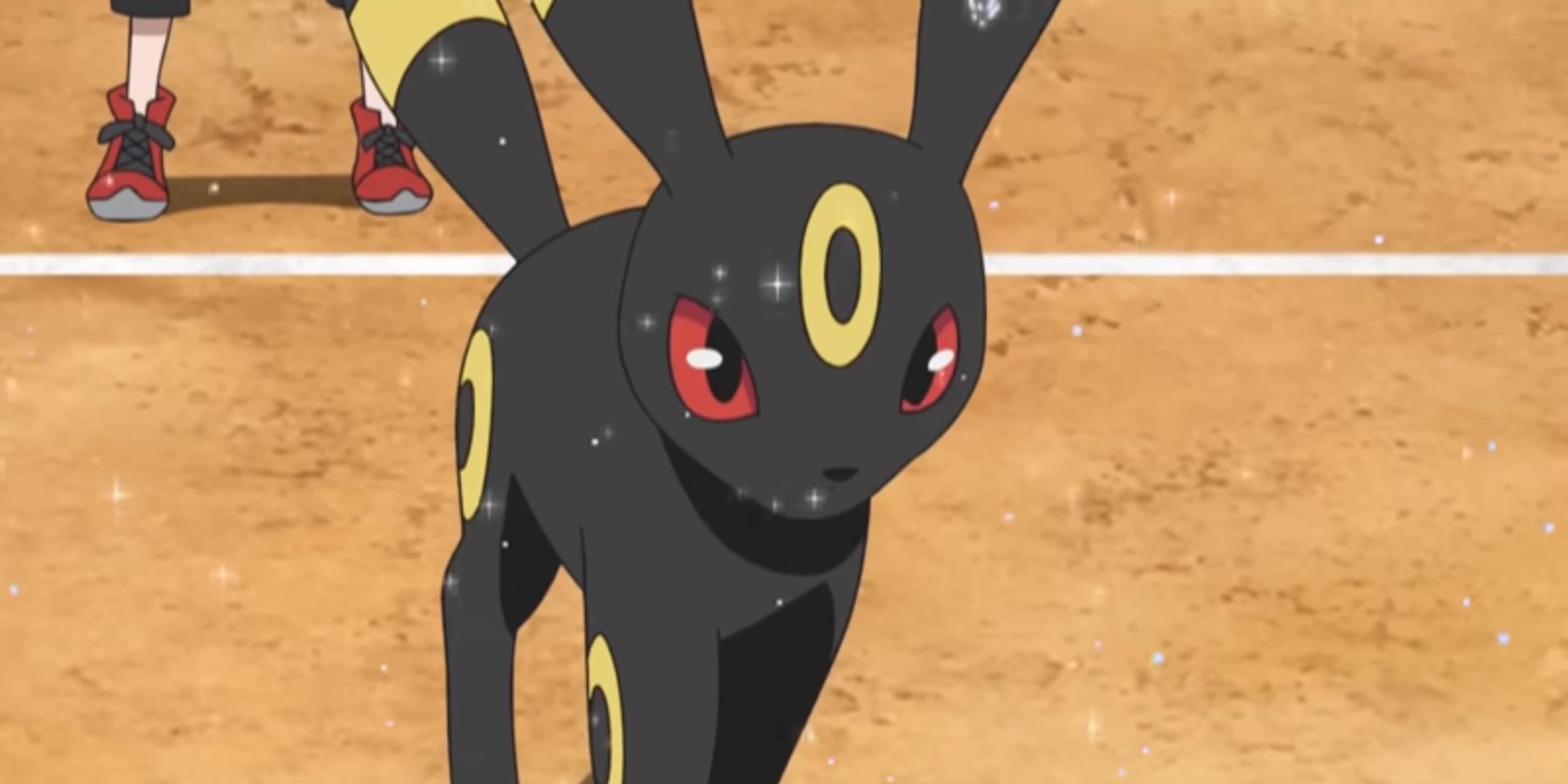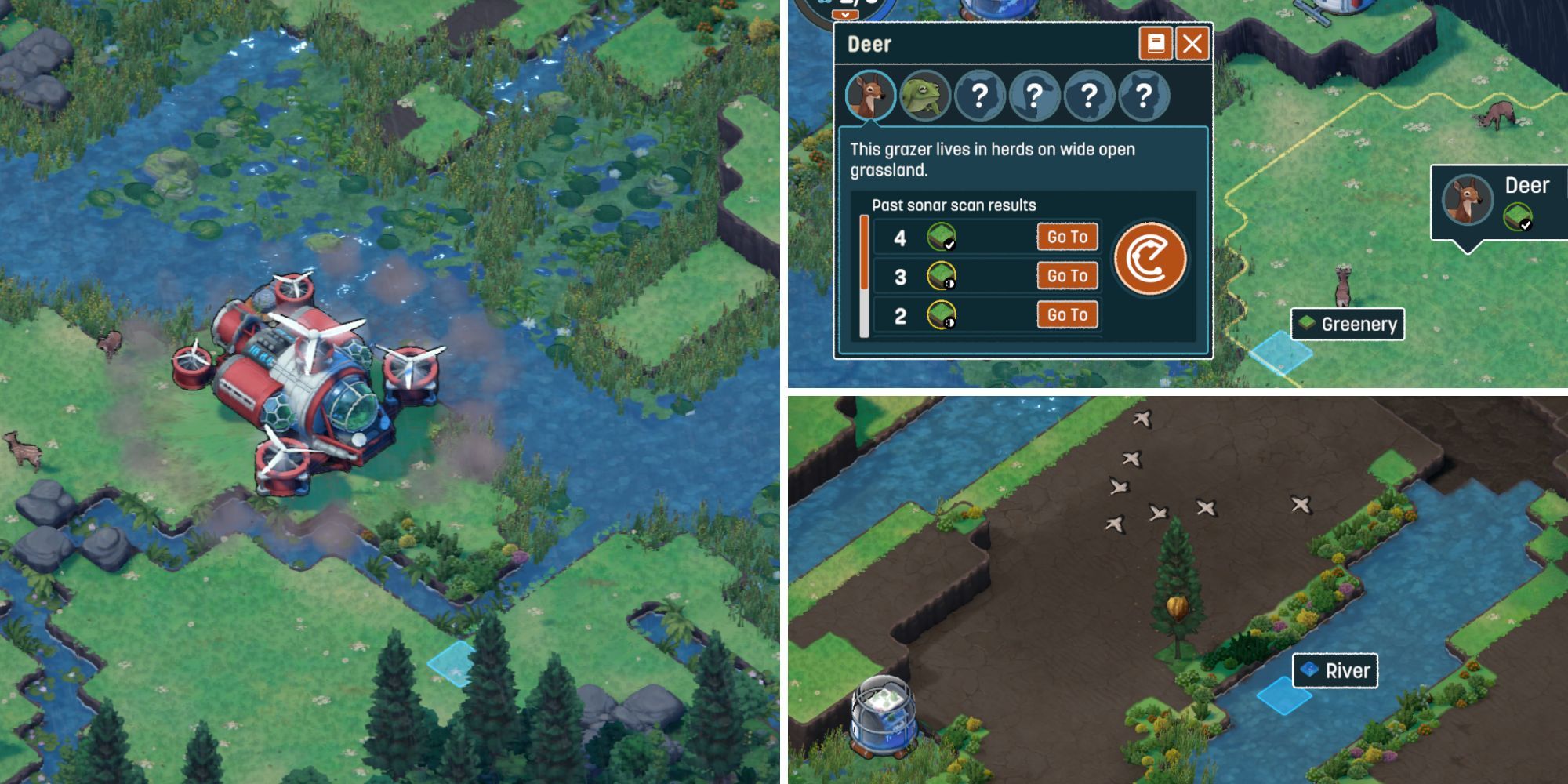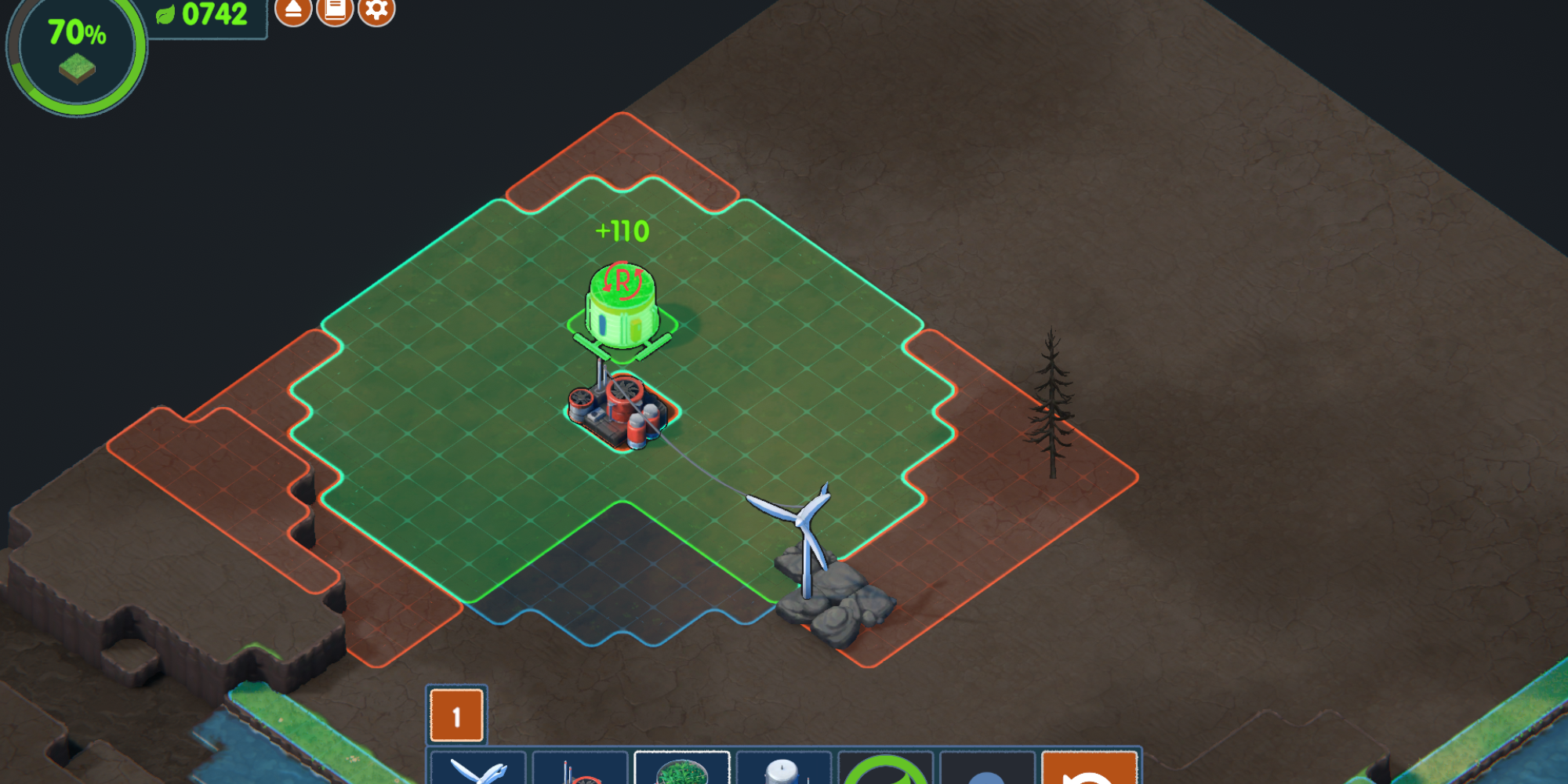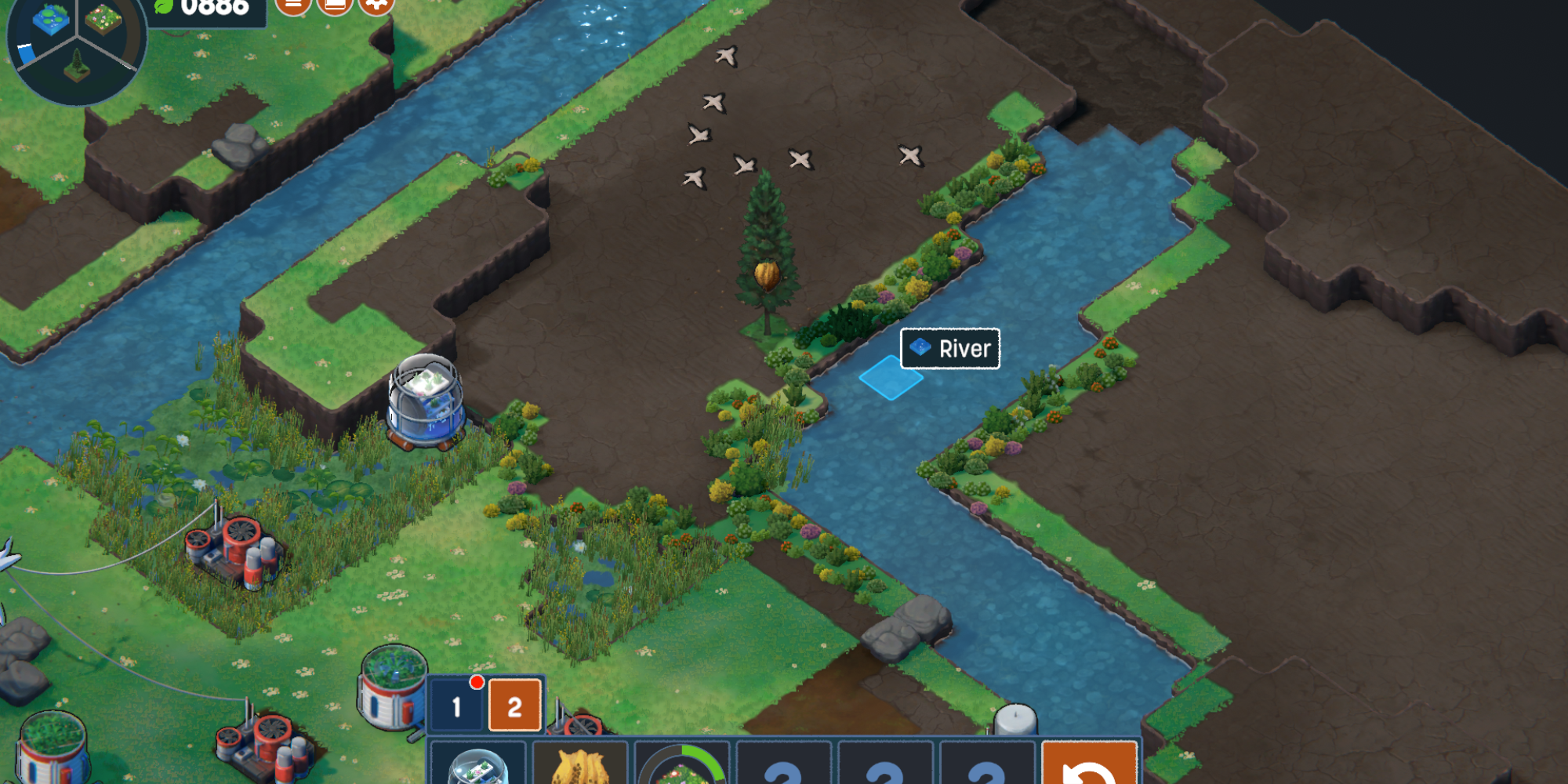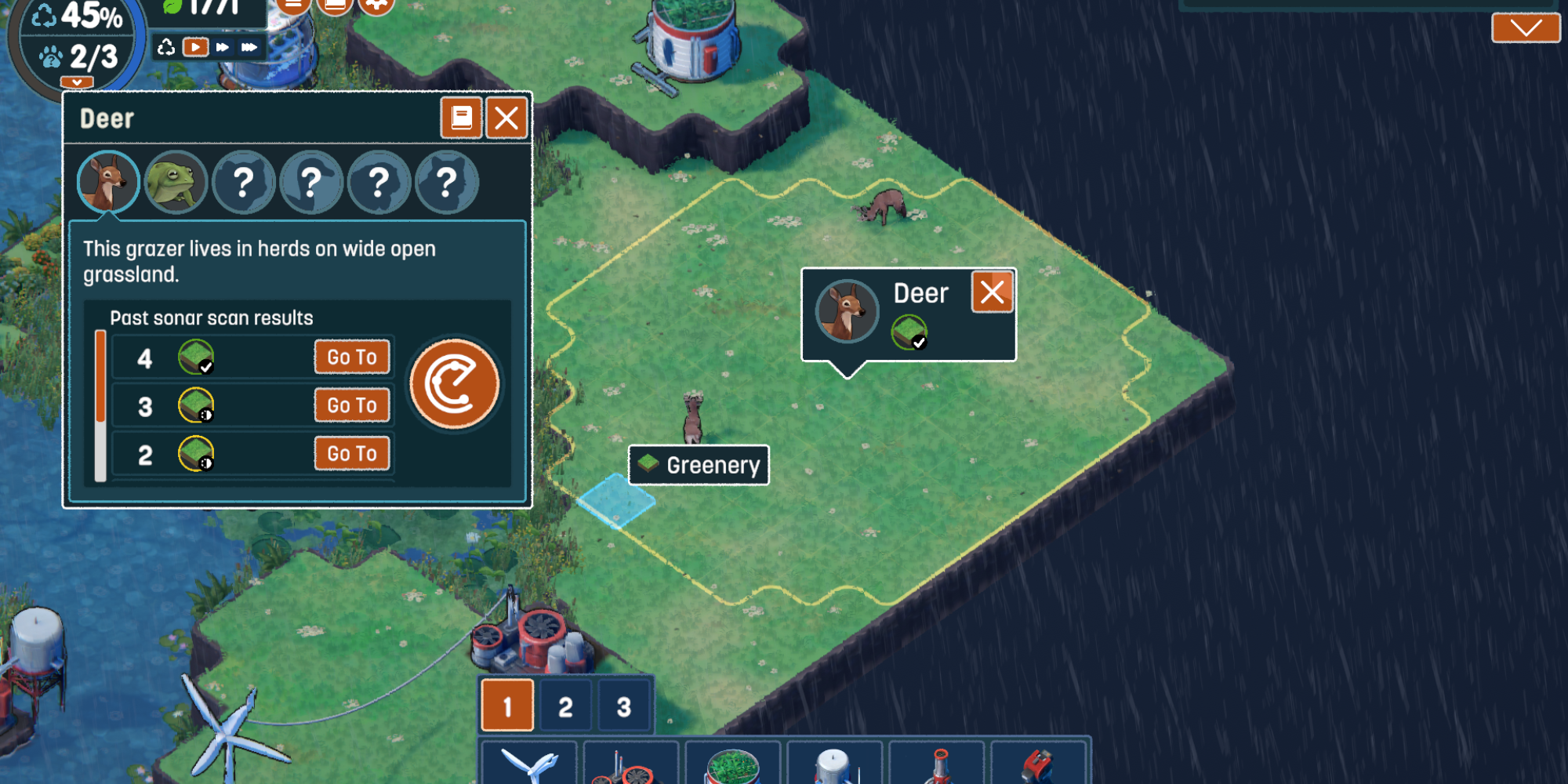Terra Nil is a beautiful game, reminiscent of city-building games, but with a big difference: the goal is not to build busy cities but to restore a barren, lifeless earth instead. Players will travel around the globe, using technology to encourage new growth and create self-sustaining ecosystems in different climates.
The first stage, River Valley, is a temperate climate with forests, wetlands, and greenery. Several species (like deer, beavers, and frogs) may thrive here if players create the perfect conditions for them. Here's what players need to know about restoring the first stage of Terra Nil.
Phase 1: Restore Greenery
The first stage is to restore greenery. This is fairly straightforward in the River Valley stage. Turbines must be placed first, but these can only be positioned on rocks. Levels are procedurally generated, so if players are not blessed with an even spread of rocks, they can use the calcifier to create new rocks from water to reach those barren spots.
Once turbines have been placed, the player can place a few toxin scrubbers. Toxin scrubbers create fertile soil, so it's best to place these evenly and as far from the turbine as possible to get a good spread of fertile land. Players can place irrigators next, which provides greenery (and resources for players to spend).
The map doesn't have to be completely covered in greenery to progress to the next stage, but it does help to have an even spread of green land to transform later. Players can track their progress on the top left-hand side of the screen. Once that percentage hits 100, it's time to increase biodiversity!
Phase 2: Increase Biodiversity
Check out the top left-hand corner of the screen: it should show a chart tracking fynbos, forest, and wetland. The player must create an even spread of these three biomes.
An important note up front: river placement is key. Players will need an even spread of rivers for the next stage. At this point, it's a good idea to create rivers using the excavator. Try to ensure that rivers are spread evenly across the map.
Wetland
Creating wetland is pretty simple: find irrigators near water and replace them with hydroponiums. That's it!
Fynbos
Fynbos flowers are fairly easy to create. Placing a beehive on a tree will cause surrounding areas to bloom.
Forest
Creating forests is a little more complicated. Forests grow in soil rich with ashy nutrients, which means setting everything on fire. Or at least enough fire to create a rich spread of woodland later.
Use the solar amplifier to start a fire. But be warned: the fire will spread until it hits rivers or elevated areas. It's a good idea to dig around an area using the excavator to stop the fire from accidentally destroying too much.
Once the fire has stopped, players can place an arboretum on the ruins of destroyed buildings, which will create a forest on surrounding tiles.
Climate Attributes
Placing a research center will allow players to observe the climate in more detail. In later levels, managing these percentages becomes quite complicated, but in River Valley, players only have to worry about managing the humidity.
Humidity can affect growth, and players must reach a humidity of 70% to complete this stage. Placing rain seeders can help to increase this number.
Phase 3: Recycling
The third stage is recycling, which is where Terra Nil differs quite drastically from city-building games. This stage involves breaking down and removing all traces of alien equipment or buildings. During this stage, players will need to encourage wildlife to thrive.
Animals
There are six animals to find in River Valley. Players must place an observatory, which will allow them to scan areas for potential species. Click the red arrow on the top left-hand side; this will show all species and give some hints on how to attract new ones.
Each species has different requirements:
- Deer: needs 20 Greenery tiles
- Frog: needs 10 Wetland tiles, and 5 Fynbos tiles
- Brown Bear: needs 20 Forest tiles, on a hill of 20 tiles, and in range of a beehive
- Goose: in a lake/river with a radius of at least 4 tiles
- Beaver: needs 20 River tiles and 10 Forest tiles
- Timber Wolf: needs 15 Forest tiles and to be in range of deer
Recycling
Now, to remove all traces of alien interference. Place an airship, then a recycling silo; this will automatically recycle buildings within a certain radius.
The last stage is to remove those recycling silos. Loading docks are required for this: place them along the rivers near the recycling silos, then send a recycling drone to collect the waste.
Once three species have settled in and players have recycled 100% of the buildings and items on the map, they can click the bright red button and watch the airship take off! Clicking "Appreciate" is a nice way to enjoy nature flourishing in the land players have worked so hard to restore.
Terra Nil is currently available on PC and Mobile.

